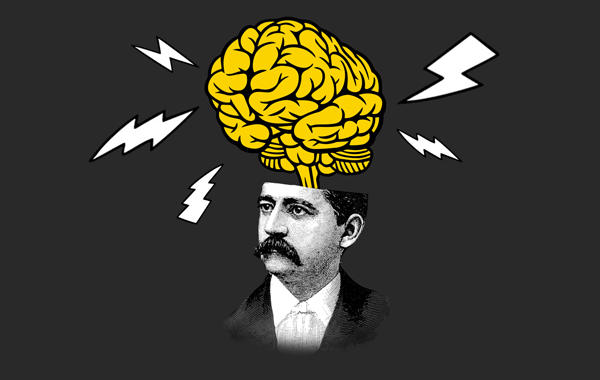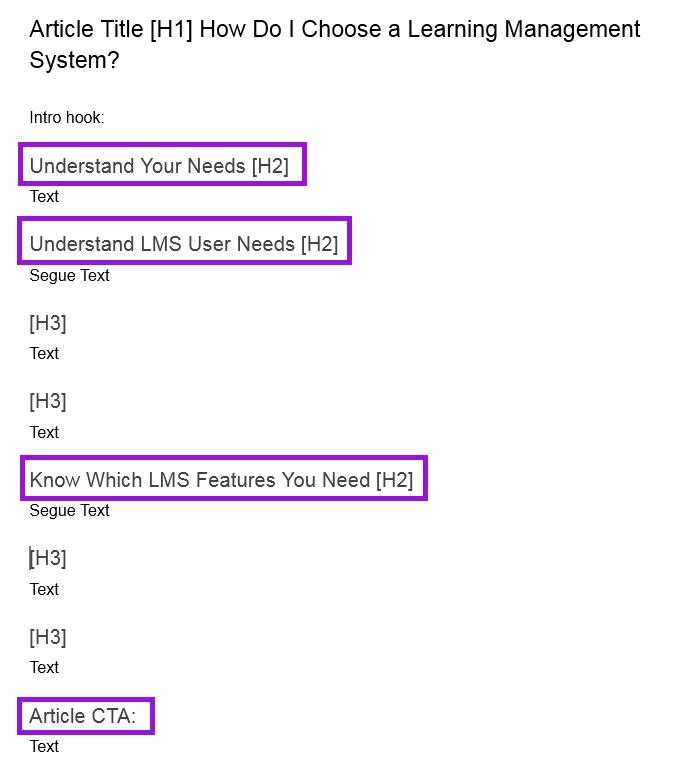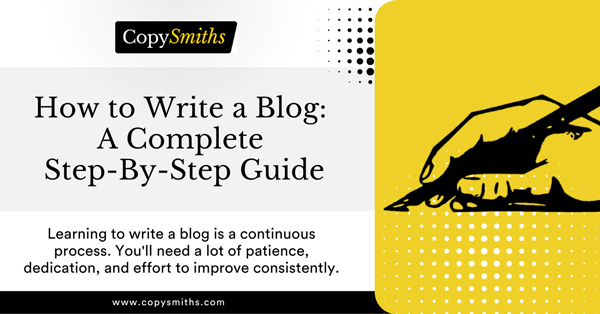Home » Copywriting » How to Write a Blog: A Complete Step-By-Step Guide

How to Write a Blog: A Complete Step-By-Step Guide
Have you stumbled upon a blog article where the writer’s skillful execution of ideas made you purchase a product, subscribe to their newsletters, or follow their social media page?
Let me guess, you probably thought, “Wow, I wish I could do this too.”
Well, you absolutely can. Matter of fact, you are only four steps away from writing your first high-quality blog.
But why bother learning to write a blog?
Research by HubSpot indicates that businesses incorporating blogging into their marketing strategy are 13 times more likely to see a positive ROI, making it a valuable investment for any eCommerce store owner looking to grow their business.
But that’s not all, learning to write a blog can benefit your business in several other ways such as:
- A well-written blog can attract more visitors to your website, which can lead to an increase in sales and revenue
- Writing well-researched and informative blogs can help you establish your brand as an authority in your industry
- Coming up with high-quality blogs consistently can give you a unique edge over your competition and make your business stand out in a crowded marketplace
Without further ado, here’s how you can start creating captivating blog posts that not only help your business thrive but also keep you ahead of the competition.
Step 1 - Come Up With an Attention-Grabbing Title
A compelling title can be the difference between a reader clicking on your article or scrolling past it, making it a critical component of driving traffic to your website.
Think of a blog as a house filled with content and the title of your post as the front door.
If your ‘door’ is poorly maintained or unattractive, guests won’t want to come in and explore your content.
To attract guests, your ‘door’ has to be beautiful and appealing.
That’s why investing time and effort into crafting an attention-grabbing article that entices and draws in your target audience can be a game-changer for your business.

So how can you ensure you have an attention-grabbing title?
Well, there are four effective ways to do this. Let’s explore each of them in-depth.
Make It Descriptive
A good title must accurately reflect the content of the blog article.
You want to tell readers that you understand their needs and can offer them comprehensive solutions.
Let’s assume you sell online courses and want to write a blog targeting individuals looking for online courses to acquire the necessary skills to start a business.
Using a title like “How to start a business” might not help grab their attention because it’s too generic and lacks specificity.
Instead, use a title that emphasizes value, such as “Start Your Entrepreneurial Journey Today With These 4 Free Online Courses.” Such a title accurately reflects what the blog is about and the benefits readers will get from it.
Let’s break this down:
- Start Your Entrepreneurial Journey Today – This reflects the topic of your blog article and appeals to readers interested in starting a business.
- With These 4 Free Online Courses – This emphasizes the value they’ll get from reading your blog (being introduced to 4 free online courses).
Keep It Concise
A concise title helps readers quickly understand what the blog is about.
With the average human attention span at just eight seconds, and even shorter for readers scrolling through hundreds of blog articles online, it’s crucial to capture your readers’ attention quickly.
Here are a few things you could do to make sure your title is concise:
- Avoid using long, convoluted phrases or complex language – these might confuse or turn off your readers
- Avoid using filler words or unnecessary phrases – these take up valuable space and can bore readers
- Use numbers – these make your title easier to read (32 instead of thirty two)
Make It Catchy
A catchy title will help reel in your readers, capture their attention and make them want to learn more.
It can help evoke feelings of excitement, shock, and curiosity, making your readers more likely to engage with your blog.
For instance, a title like “Get Hooked: 10 Surprising Benefits of Fishing” is both descriptive and catchy. The play on the words “Get Hooked” and the use of a number in the title can arouse the reader’s curiosity and encourage them to click on your post (according to eye tracking data).
Make your title catchy by using the following:
- Humor
- Unpopular opinions
- Questions
Incorporating these with your unique creativity can help create catchy blog titles that may boost your blog’s engagement leading to more sales and repeat business.
What do you do when you’re not feeling creative?
Simple answer, man’s 2nd best friend (after dogs), artificial intelligence.
Never let writer’s block get you down; instead, use title generators to help you come up with catchy titles.
Use Strong Keywords
In addition to being descriptive, concise, and catchy, strong keywords can help capture the reader’s attention.
Strong keywords are words or phrases people use to search for answers or information online.
Incorporating strong keywords into your title can help:
- Improve your search engine ranking
- Make your title stand out and easy for readers to find
When a potential customer is scanning through a list of search results, the presence of relevant or interesting keywords can catch their eye and encourage them to click on your blog.
For example, if they were searching for restaurants that accept pets, including “pet-friendly” in your title can make it easier for them to find your blog.
A title such as “Best Pet-Friendly Restaurants in Your City” is more likely to appear in relevant search results than “Best Restaurants in Your City.”
Step 2 - Research and Create a Well-Structured Outline
Once you understand the promise in the title and the audience you are addressing, the next step is creating a well-structured outline.
Creating a well-structured outline can help you:
- Organize your thoughts
- Ensure a logical flow of ideas
- Save time by keeping your writing focused
Start by gathering relevant information and data about what you want to write in the blog.
Use trusted sources such as:
- Academic journals
- Books
- Industry reports
- Credible websites
If you don’t research properly, you might give false information or run out of ideas while writing your blog. This will make readers lose trust in your content and give your website terrible reviews.
Once you finish the research, it’s time to organize your findings into a well-structured outline.
Your outline needs to include the following:
- An introduction – Use this section to briefly introduce the topic to be discussed and build the reader’s interest in your blog.
- Body – This is the main part of your blog and should discuss the topic at length. Use subheadings to help make individual ideas stand out and be easy to understand.
- Conclusion – This is the final part of the blog; use it for summarizing the key points covered. End with a call to action to encourage readers to engage further with your blog by subscribing to newsletters or purchasing a product.

Always revise your outline, and make sure it flows logically and smoothly. Once you are satisfied with your outline, you can move to the next step, writing your blog.
Step 3 - Write In-Depth, Engaging, and Informative Content
As an eCommerce store owner, you shouldn’t solely focus on promoting your business. Instead, you can also work towards quenching your readers’ thirst for information by providing them with valuable and informative content that meets their needs and interests.
By doing so, you can establish your blogs as authoritative and trustworthy sources of information, ultimately driving more traffic, engagement, and sales to your eCommerce store.
To succeed, you should write with clarity and concision.
This means every phrase or sentence written must add value to the overall content of your blog and help deliver your message efficiently.
Take your time to expound on each subheading in your outline, using the knowledge gained from your research.

To make your content informative and engaging, incorporate the following:
- Relevant statistics
- Credible research data
- Appropriate links to support your claims
This adds credibility to your work and provides readers with additional information to explore to understand the topic better.
“The currency of blogging is authenticity and trust.” – Jason Calacanis
To help overcome writer’s block, seek inspiration from other blogs or AI tools, but NEVER plagiarize their content.
Step 4 - Make Your Blog Visually Appealing
Making your blog visually appealing can encourage readers to stay on your site for longer periods of time.
Increasing their dwell time allows them to interact with your content, potentially leading to more conversions and sales for your business.
Sadly, it’s easy to find writers put all their focus on crafting compelling content that they forget the importance of their blog’s visual appearance.
However, it’s important to remember that readers can and will judge a blog by its appearance.
A poorly formatted or unappealing design may deter readers from engaging with your content, even if your blog is filled with valuable information.
In other words, aesthetics matter just as much as the quality of your writing.
Readers hate:
- Walls of text with no breaks or subheadings
- Overly complex or technical jargon
- Inconsistent writing style
- Poor punctuation
If your article has walls of overly complex text, written inconsistently, readers will lose interest quickly and leave your website.
Readers love:
- Shorter sentences
- Proper subheadings
- Bullet points
- Good layout and structure
- Consistent fonts
Break down your content into smaller, easily scannable chunks. This makes it easier for readers to read and stay interested throughout the blog.
Expert Tip: Include relevant visual elements such as charts, images, and videos to make your blog even more visually appealing.
Finally, don’t forget to proofread your blog before publishing it.
Check for:
- Errors in grammar
- Spelling errors
- Poor punctuations
- Inconsistency in the format
And just like that, you’re done. Easy right?
Ready to Take Your Blog to the Next Level?
Learning to write a blog is a continuous process.
You’ll need a lot of patience, dedication, and effort to improve consistently. After all, Rome wasn’t built in a day.
If you’re looking for an immediate solution (maybe you are short on time and lack the necessary skills), let the professionals at CopySmiths handle your blog writing for you.
With our team of great writers, we can help you consistently produce high-quality content that engages your readers and drives traffic to your website.

If you’d like to stay up-to-date with the latest tips and tricks for eCommerce success, subscribe to our CopyZine newsletter.
Thank you for reading, and happy writing.
Share on LinkedIn:
CopySmiths
I'm Katrina McKinnon, founder of CopySmiths and Small Revolution. In my 20 years of experience, I have helped online businesses create high-performing content specifically on an eCommerce store's blog. Find me on LinkedIn and Twitter.

CopySmiths offers the best blog writing services for online stores.
If you'd like us to write blog articles for you, click here.
Most Recent
- 3 Bold Questions You Should Ask When Hiring A Content Writer

- 5 Practical Reasons You Should Use a Blog Post Template

- 4 Amazing Benefits of Using a Title Generator for New eCommerce Blogs

- 10 Awesome Bio Examples Your Online Store Blog Should Emulate

- 8 Basic Steps to Successful Content Development Every Time

Podcasts
Got a question?
Ask our friendly team about our article writing services.
Subscribe to CopyZine
Monthly, hand-picked stories of the best in eCommerce Content.





